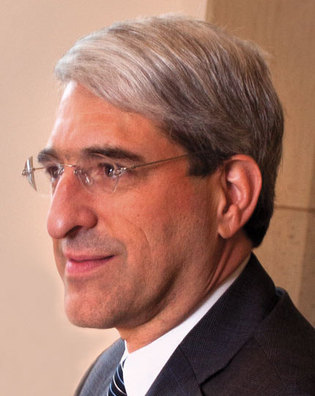 loading
loading
Q&A: Peter SaloveyResource analysisMoney questions about science at Yale. Kathrin Lassila ’81 is editor of the Yale Alumni Magazine.  Mark OstowView full imageY: Your predecessor, President Rick Levin [’74PhD], stressed investing in science, partly to counteract Yale’s previous history of deemphasizing science. That move caused some humanities faculty concern about Yale’s commitment to the humanities. S: I think the science-humanities debate reflects something of a false dichotomy. Yale has an outstanding reputation in the arts and humanities, and there is no interest in compromising that reputation or in diverting resources for any other purpose. Learning in those domains is fundamental to a liberal education for college students, and graduate students’ scholarship is fundamental to creating new ways of thinking about the challenges that face humanity. We want to encourage new kinds of scholarship and teaching in these areas of tremendous strength. At the same time, Yale has an important history in the sciences and engineering. Benjamin Silliman [Class of 1796] and J. Willard Gibbs [Class of 1858, ’63PhD] were the greatest scientists of their eras. The past several decades have seen a very competitive environment in these fields. To be engaged in the very best basic science, applied science, and engineering, we had to focus new resources on these fields. We will continue to do that. But there will be no diminution of our championing of the arts and humanities. Y: In 2000 Rick Levin committed to spend $500 million on science facilities. What’s the tally to date? S: We’ve expended about half a billion dollars on central campus science facilities since he made that statement—about half for new buildings and half for substantial renovations. To that you can add almost $1 billion of renovation and new buildings on the medical campus, with $600 million of that amount directly spent on science facilities. And then add Yale’s purchase and renovation of science space on West Campus. We have more than met the goal President Levin set, and we’ve kept right on going. We are currently working on a $130 million renovation of the Sterling Chemistry Lab, and the next big science project will be the new biology building. Of course we have other projects in the works too—for example, the renovation and restoration of the Sterling Library nave, the renovation of Hendrie Hall, largely for music, and a major renovation of the Hall of Graduate Studies. Y: How is Yale doing in federal funding for science? S: In recent years we have spent about $550 million a year on federally funded scientific and medical research. Our medical school is number one among medical schools in funding per faculty member. With the sequester, our federal funding for science and medical research dropped by around four percent. Now, with the Ryan-Murray budget bill and the recent appropriations bill, some of that cut has been restored. But key programs, such as the National Institutes of Health—as well as the National Endowment for the Humanities—are not up to the levels of 2011 and 2012. Yale can absorb small ups and downs, but if the curve continues downward, it would have a serious impact. And so, while I’m pleased that there’s been some restoration of the federal research budget, as a country we still run the risk of compromising a science and medical research effort that is the envy of the world and drives many aspects of our economy. Having said all that, one of the great things about scientific and medical research in the US, historically, is that it has received bipartisan support. Both parties recognize its importance for solving human problems and for quality of life, as well as for stimulating economic development. I don’t think anyone in either party would want to compromise the country’s leading position in science.
The comment period has expired.
|
|